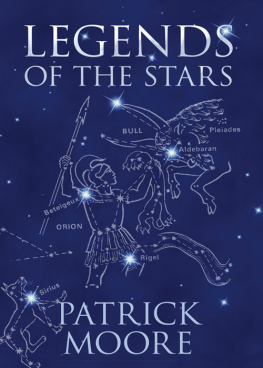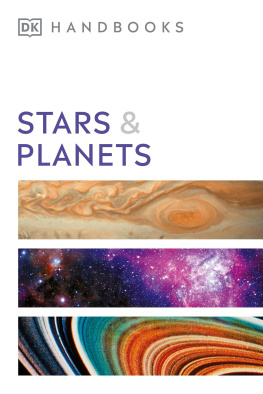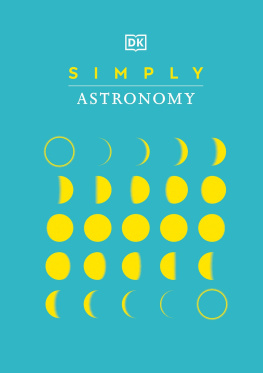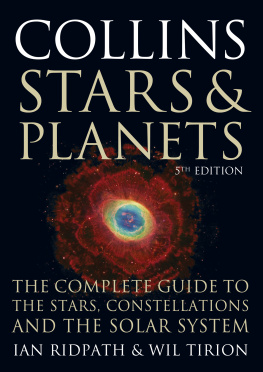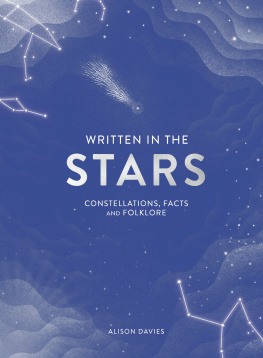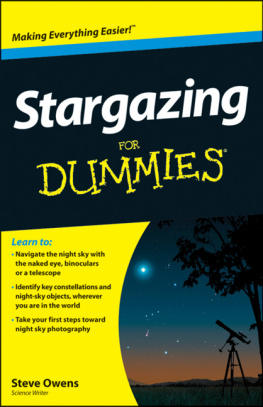Cover Image: The night sky from Loch Fleet, Sutherland, Scotland February 2016.
Credit: Stephen Marrable, used with permission.
Copyright 2016 by Richard J. Bartlett
All rights reserved. Except for brief excerpts used in a review, this book or any portion thereof may not be reproduced or used in any manner whatsoever without the express written permission of the publisher.
About this Book
As I was writing I came to realize that theres also a lot to be seen with just your eyes or binoculars. I originally intended this book to be for beginners, the folks who have looked up at the sky but dont really know much about the stars or what treasures might be found among them. I say originally because I think theres a fair amount of information that might be new to more experienced observers too.
Consequently, this book isnt so much about learning to identify the stars and constellations (like a book for beginners should be) but rather a book that takes you deeper once youve gained a little familiarity with them. Realistically theres nothing to stop you from learning the constellations using the star charts Ive included in the book, but that isnt the books primary goal.
My goal was to produce a book that would allow the reader to go outside at any time of year, look to the stars and then learn more about the visible constellations and the brightest stars and objects of interest to be found there.
This book is not designed to be all-inclusive list and its not designed to be a definitive guide. Ive tried to stick to the easier constellations with the easier objects, but some constellations may feature objects that are harder to find than others.
I particularly wanted to focus on anything that could be seen with just your eyes or, since many households have binoculars, what objects might be visible with a regular set of 10x50s. My goal was to highlight objects that were either easily visible with just your eyes or lay within the same binocular field of view as a bright star.
Consequently, many of the objects are easily found and observed, but there are a few that might provide a challenge once the easier targets have been sighted. Likewise, there are a few constellations that contain objects best observed with a small telescope the double star being a prime example. Although Ive mentioned these and encourage you to further explore the universe with a small telescope Ive tried to keep these to a minimum.
The book is divided up as follows:
In Ill discuss the different objects youll be able to observe and review the information to be found on the individual pages for the constellations themselves.
More specifically, itll show you how you can use these constellations to find others in the sky. If youre very new to astronomy, you might find this useful.
The .)
The chart will show you the night sky as it appears at that time and also includes a list of visible constellations. The list is alphabetical but its not an all-inclusive list as Ive focused on the constellations that should be highest over the horizon at that time.
Next youll find the biggest section Ive focused on the major constellations and have provided a chart of the general area. The text for each constellation details its brightest star and, for many of the constellations, highlighted several objects of interest that are typically visible with either just your eyes or binoculars. (As stated earlier, some objects may require a small telescope.)
Nearly all the constellations will also have three smaller images depicting either those objects location or the view through binoculars.
Theres an that contains the greek alphabet and recommended resources such as books, software and Facebook groups.
Lastly, I want to say thank you to Stephen Marrable and Wayne Roberts. Stephen very generously donated his image of the night sky from Loch Fleet, Sutherland in Scotland for the cover. You can see more of his excellent photography at http://tinyurl.com/smarrable
Im also thankful to Wayne as he was able to spot a number of typos and suggested a few corrections to the text which helped improve its flow. Wayne has a Facebook group, Astronomy Workfile, at https://www.facebook.com/groups/astronomyworkfile/
About the e-Book Version
There are pros and cons to the e-Book format. On the plus side, you can double tap on any image and enlarge it to fill the entire screen; you can also zoom in and out. Very handy for the charts! You can also tap on any text like this to go to another part of the book or a website.
One big plus for many readers is the ability to change the size of the font but this is also a potential problem because it means the layout of a page is lost. Consequently, this book doesnt have the layout or the general appearance of its paperback counterpart and the book flows in a very linear fashion (ie, text and graphics follow on from one another, rather than, for example, an image appearing to the left or the right of the text. As a consequence of this, to accommodate the graphics, some page and text breaks may appear in slightly odd places.)
Similarly, tables of information cant be reliably displayed across all devices as the screen sizes will vary. For example, your cell phone doesnt have the same sized screen as a full-sized tablet. Ive had to remove some tables that appear in the paperback version (eg, the list of constellations) and reformat others to take this limitation into account.
About the Author
Ive had an interest in astronomy since I was six and although my interest has waxed and waned like the Moon, Ive always felt compelled to stop and stare at the stars.
In the late 90s, I discovered the booming frontier of the internet, and like a settler in the Midwest, I quickly staked my claim on it. I started to build a (now-defunct) website called StarLore. It was designed to be an online resource for amateur astronomers who wanted to know more about the constellations - and all the stars and deep sky objects to be found within them. It was quite an undertaking.
After the website was featured in the February 2001 edition of Sky & Telescope magazine, I began reviewing astronomical websites and software for their rival, Astronomy . This was something of a dream come true; Id been reading the magazine since I was a kid and now my name was regularly appearing in it.
Unfortunately, a financial downturn forced my monthly column to be cut after a few years but Ill always be grateful for the chance to write for the worlds best-selling astronomy magazine.
I emigrated from England to the United States in 2004 and spent three years under relatively clear, dark skies in Oklahoma. I then relocated to Kentucky in 2008 and then California in 2013. I now live in the suburbs of Los Angeles; not the most ideal location for astronomy, but there are still a number of naked eye events that are easily visible on any given night.
Also by the Author
2016 An Astronomical Year is written for everyone with an interest in astronomy and contains information on hundreds of night sky events throughout the year. It was designed for astronomers of all levels and includes details of the lunar phases and eclipses, as well as conjunctions, oppositions, magnitude and apparent diameter changes for the planets and major asteroids.
To date, the 2015 edition has been downloaded nearly 3,000 times, was ranked #1 in Free Kindle Astronomy books, within the Top 10 Paid Kindle Astronomy books and within the Top 50 Free Kindle Non-Fiction books.


